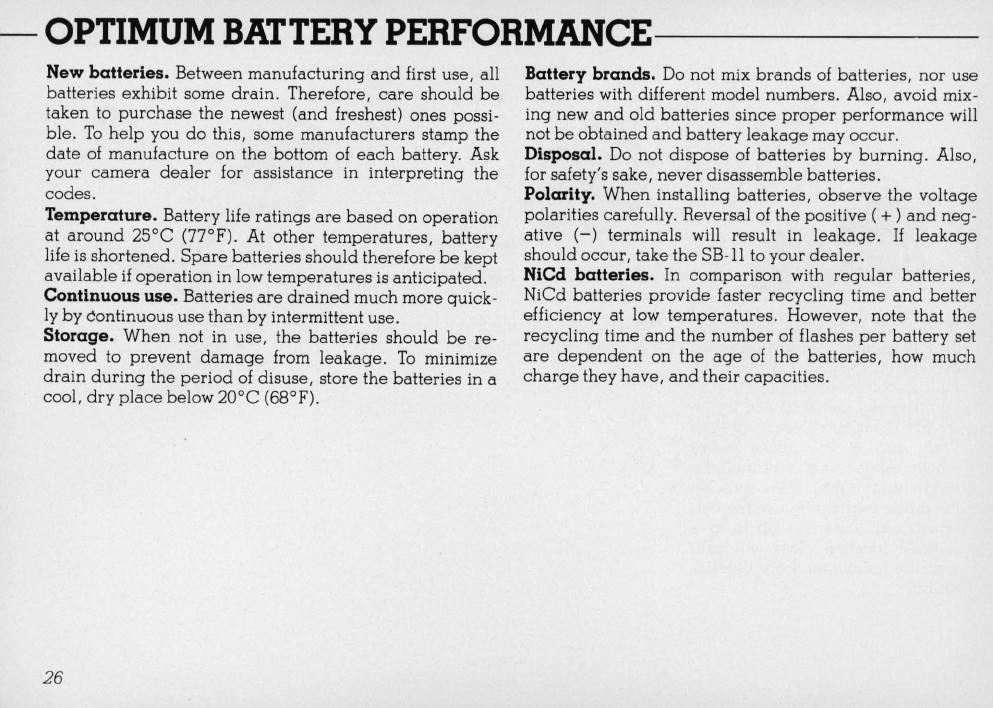
- OPTIMUM
BATTERY
PERFORMANCE--
----
New
batterie
s.
Between
manufacturing
and
first use, all
batteries
exhibit some
drain
. Therefore,
care
should
be
taken
to
purchase
the
newest
(and
freshest)
ones
possi-
ble.
To
help
you
do
this,
some
manufacturers
stamp
the
date
of
manufacture
on
the
bottom of
each
battery. Ask
your
camera
dealer
for assistance in
interpreting
the
cod
es.
Temperature. Battery life
ratings
are
based
on
operation
at
around
25°C
(77°F). At
other
temperatures,
battery
life is
shortened
.
Spare
batteries
should
therefore
be
kept
available
if
operation
in low
temperatures
is
anticipated.
Continuous
use
. Batteries
are
drained
much
more
qUick-
ly
by
continuous
use
than
by
intermittent
use
.
Storage.
When
not in use,
the
batteries
should
be
re-
moved
to
prevent
damage
from
leakage.
To
minimize
drain
during
the
period
of disuse, store
the
batteries
in a
cool,
dry
place
below
20°C
(68°
F)
.
26
Battery brands. Do not mix
brands
of
batteries
,
nor
use
batteries
with different model
numbers
. Also,
avoid
mix-
ing
new
and
old
batteries
since
proper
performance
will
not
be
obtained
and
battery
leakage
may
occur
.
Disposal. Do not
dispose
of
batteries
by
burning.
Also,
for safety's sake,
never
disassemble
batteries.
Polarity.
When
installing
batteries,
observe
the
voltage
polarities carefully. Reversal of
the
positive ( + )
and
neg
-
ative
(-)
terminals will result in
leakage
.
If
leakage
should
occur,
take
the
SB-ll
to your
dealer
.
NiCd batteries. In
comparison
with
regular
batteries,
NiCd
batteries
provide
faster
recycling
time
and
better
efficiency at low
temperatures.
However, note that
the
recycling
time
and
the
number
of flashes
per
battery
set
are
dependent
on
the
age
of
the
batteries,
how
much
charge
they have,
and
their
capacities.


















